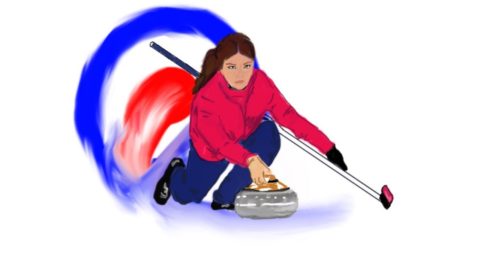If our world was like a curling rink, it would be a pretty nice world indeed. I don’t particularly identify as a social activist, but it’s plain to see that our society has some issues that need resolving, particularly related to gender equality. One way to help combat these issues? Curling.
Hear me out. As a sports fan, I think it would be nice to see professional leagues with some more representation across the board. In particular, I think it would be cool to see some prime-time leagues that break the male gender monopoly.
Fortunately, there are a few examples where this has happened and worked brilliantly. Take professional curling. I get it — a lot of people would rather watch  competitive knitting. But it’s hard to think of another mass-market televised sport in Canada in which arguably the greatest player of all time was a woman.
competitive knitting. But it’s hard to think of another mass-market televised sport in Canada in which arguably the greatest player of all time was a woman.
If you’ve lived in Saskatchewan for long enough, you’ll know that I am talking about Sandra Schmirler. Although she is best known by current students for her battle with cancer — one that she tragically lost at a young age — Schmirler the Curler is immortal in the world of Canadian sports.
Her team at the 1998 Nagano Olympics was the first to ever win gold in women’s curling at the Winter Olympics, laying the cornerstone for one of the most popular Winter Olympic sports for the foreseeable future.
If you want to get a sense of just how good Schmirler was, go online and find some footage of her game-winning shot at the 1997 Olympic trials for the Canadian women’s team. Making a shot off her own rock to take out her opponent’s stone and win the game? That’s one of the most clutch moments in all of professional sport.
There are some small gender differences in performance, but they really only exist in the big leagues. That’s not to say, however, that female curlers aren’t world-class athletes. In fact, I already know that a workout session with Rachel Homan’s Ontario team would make me puke if I tried to keep up.
My personal favourite, however, is mixed curling. If you need a textbook example of gender equality, there it is. Although top-level mixed curling isn’t as big of a spectator sport — and is not in the Olympics — it’s just as competitive as men’s or women’s curling.
At the recreational level, mixed curling is usually the rule. Having played on a couple of beer-league mixed teams, my experience was that of a diverse group of people being treated as equals, both on the ice and in the clubhouse. In fact, I’m pretty sure the only person that ever got judged was me. Which was fair, because the only skill I have is making my teammates cringe.
In fact, because curling demands such a high level of respect for everything — especially the ice surface — the smallest degree of prejudice will make you look like a massive jerk.
This is what I think makes curling such an awesome sport. I believe that curling is a game of co-operation, respect and gender equality. A little bit of class can go a long way. If we could take a few lessons in community from our rock-throwing, ice-sweeping comrades, I really believe we’ll be able to understand each other much better. And I don’t think it’s that hard to do.
Trying not to slip and fall on my keister, on the other hand, is another conversation entirely.
—
Kyle Ashdown
Graphic: Paige Sutherland